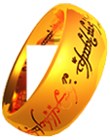Character Bios
Indis
Meaning: great or valiant woman
Other Names:
the Fair
Race/Species: Elf
Type/Kind: Vanyar
Parents:
mother (HoME only): sister of Ingwë, High King of the Elves in Aman
Spouse:
Finwë, 1st King of the Noldor in Aman
Children:
Findis (HoME only)
Fingolfin, 1st High King of the Noldor in Beleriand
Faniel (HoME only, later abandoned by Tolkien)
Írimë (HoME only)
Finarfin, 2nd King of the Noldor in Aman
Description:
Indis of the Vanyar, niece of Ingwë, High King of Elves in Aman, is the wife of Finwë, 1st King of the Noldor in Aman, and the mother of Fingolfin, 1st High King of the Noldor in Beleriand, and Finarfin, 2nd King of the Noldor in Aman:
Finwë was King of the Noldor. The sons of Finwë were Fëanor, and Fingolfin, and Finarfin; but the mother of Fëanor was Míriel Serindë, whereas the mother of Fingolfin and Finarfin was Indis of the Vanyar.
The Silmarillion, Quenta Silmarillion, Ch 5, Of Eldamar and the Princes of the Eldalië
Finwë's second wife was Indis, which means 'great or valiant woman'. No other names are recorded. She is said to have been the daughter of King Ingwë's sister.
The Peoples of Middle-Earth, HoME Vol 12, Part 2, Ch 11, The Shibboleth of Fëanor
Now it came to pass that Finwë took as his second wife Indis the Fair. She was a Vanya, close kin of Ingwë the High King, golden-haired 1 and tall, and in all ways unlike Míriel. Finwë loved her greatly, and was glad again. But the shadow of Míriel did not depart from the house of Finwë, nor from his heart; and of all whom he loved Fëanor had ever the chief share of his thought.
The wedding of his father was not pleasing to Fëanor; and he had no great love for Indis, nor for Fingolfin and Finarfin, her sons.... But the children of Indis were great and glorious, and their children also; and if they had not lived the history of the Eldar would have been diminished.
The Silmarillion, Quenta Silmarillion, Ch 6, Of Fëanor and the Unchaining of Melkor
There was a fair lady of the Vanyar, Indis of the House of Ingwë. She had loved Finwë in her heart, ever since the days when the Vanyar and the Ñoldor lived close together. In one of his wanderings Finwë met her again upon the inner slopes of Oiolossë, the Mountain of Manwë and Varda; and her face was lit by the golden light of Laurelin that was shining in the plain of Ezellohar below. In that hour Finwë perceived in her eyes the love that had before been hidden from him. So it came to pass that Finwë and Indis desired to be wedded, and Finwë sought the counsel of the Valar.
The long debate that they held on the matter may be passed over briefly. They were obliged to choose between two courses: condemning Finwë to bereavement of a wife for ever, or allowing one of the Eldar to take a second wife. The former seemed a cruel injustice, and contrary to the nature of the Eldar. The second they had thought unlawful, and some still held to that opinion. The end of the Debate was that the marriage of Finwë and Indis was sanctioned....
During the time of his sorrow Finwë had little comfort from Fëanor.... When the matter of Finwë and Indis arose he was disturbed, and filled with anger and resentment; though it is not recorded that he attended the Debate or paid heed to the reasons given for the judgement, or to its terms except in one point: that Míriel was condemned to remain for ever discarnate.... This grieved him, and he grudged the happiness of Finwë and Indis, and was unfriendly to their children, even before they were born.
How this ill will grew and festered in the years that followed is the main matter of the first part of The Silmarillion: the Darkening of Valinor. Into the strife and confusion of loyalties in that time this seemingly trivial matter, the change of þ 2 to s, was caught up to its embitterment, and to lasting detriment to the Quenya tongue.... He made it a personal matter: he and his sons adhered to þ, and they demanded that all those who were sincere in their support should do the same. Therefore those who resented his arrogance, and still more those whose support later turned to hatred, rejected his shibboleth.
Indis was a Vanya, and it might be thought that she would in this point at least have pleased Fëanor, since the Vanyar adhered to þ. Nonetheless Indis adopted s. Not as Fëanor believed in belittlement of Míriel, but in loyalty to Finwë. For after the rejection of his prayers by Míriel Finwë accepted the change (which had now become almost universal among his people), although in deference to Míriel he had adhered to þ while she lived. Therefore Indis said: 'I have joined the people of the Ñoldor, and I will speak as they do.' So it came about that to Fëanor the rejection of þ became a symbol of the rejection of Míriel, and of himself, her son, as the chief of the Ñoldor next to Finwë.
The Peoples of Middle-Earth, HoME Vol 12, Part 2, Ch 11, The Shibboleth of Fëanor
Notes
1 Alone among the Noldorin princes [Finarfin] and his descendants had golden hair, derived from his mother Indis, who was a Vanyarin Elf....
The Silmarillion, Index of Names
2 Thorn, or þorn (Þ, þ), is a letter that Tolkien drew from the Anglo-Saxon alphabet. It is pronounced like 'th' in the English word 'thing'. For more information, see the Wikipedia entry: Thorn (letter).
Contributors:
Elena Tiriel 20Aug06, 23Oct07
